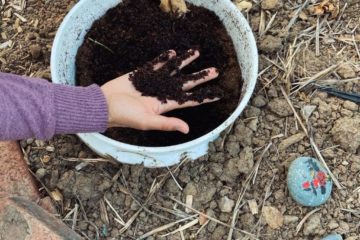Erin Madlangbayan, Education & Curriculum
Why native plants?
One of the best ways to maintain and manage a beautiful home garden is through planting native plants. Filling your garden with plants that are native to your geographical location is highly low maintenance on your part, because these plants have been adapted to withstand the climate, weather patterns, and pests of their native environment (Native Gardening, n.d.). Non-native plants have not adapted to withstand these conditions, so they may need extra care if you want them to survive. Non-native plants may need to be watered more frequently, may require special pesticides, or may even potentially become an invasive species that can spread throughout a region and harm native plants (Sakai, et. al, 2001). Not only do native plants require less maintenance than non-native plants, but having them in your home garden is beneficial for the overall environment.
Benefits
Water conservation
Native plants are well adapted to the natural weather conditions of their environment, which means you don’t have to water them as often as you would for non-native plants. Many plants native to California require very little watering once they are established, and normal rainfall is enough to sustain them (Benefits of California Native Plants, 2018).
Reduction of pesticides
Over time, native plants have built up their own natural defenses against diseases and pests (Benefits of California Native Plants, 2018). Native plants are well adapted to these disturbances so you don’t have to use harmful pesticides in your garden as often as you would for non-native plants.
Promote biodiversity
Biodiversity refers to the abundance of living things in a particular area. Diversity of life in a certain area can help ensure that an ecosystem can survive for a long period of time (Grossman, 2019). Having native plants in your garden can increase and promote biodiversity, because native pollinators, insects, and birds favor native plants (Benefits of California Native Plants, 2018).
Plants native to Northern California
California has a variety of accessible edible and non-edible native plants. A great place to start looking for these plants, as well as other California natives, are local native plant nurseries. Here are a few examples of great native plants to add to your home garden:
Edible
The berries that grow from these three plants taste sweet and can be eaten alone, be used in a variety of jams and jellies, or be baked into different pastries.
- California huckleberry (Vaccinium ovatum)
- Golden currant (Ribes aureum var. aureum)
- Blue elderberry (Sambucus cerulea)
Non-edible
These are some common native flowers that make a beautiful addition to your garden.
- California poppy (Eschscholzia californica)
- California aster (Corethrogyne filaginifolia)
- Yerba mansa (Anemopsis californica)
Sources:
Benefits of California Native Plants. (2018, March 29). Retrieved March 11, 2021, from https://www.cnps.org/gardening/why-natives/benefits-of-california-native-plants
Grossman, J. (2019). Valuing Biodiversity. Arnoldia, 77(1), 2-15. doi:10.2307/26866490
Native Gardening. (n.d.). Retrieved March 11, 2021, from https://www.fs.fed.us/wildflowers/Native_Plant_Materials/Native_Gardening/index.shtml
Sakai, A., Allendorf, F., Holt, J., Lodge, D., Molofsky, J., With, K., . . . Weller, S. (2001). The Population Biology of Invasive Specie. Annual Review of Ecology and Systematics, 32, 305-332. Retrieved March 16, 2021, from http://www.jstor.org/stable/2678643



0 Comments